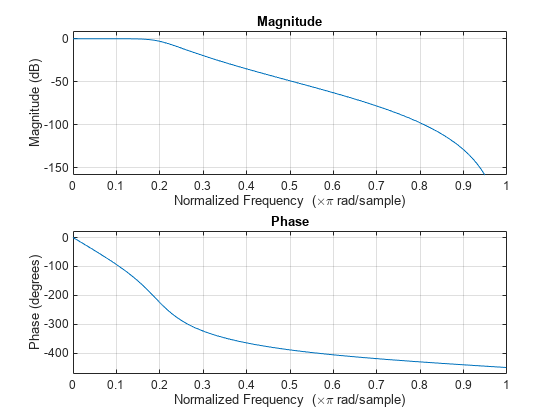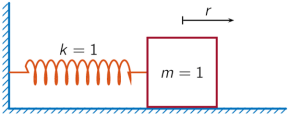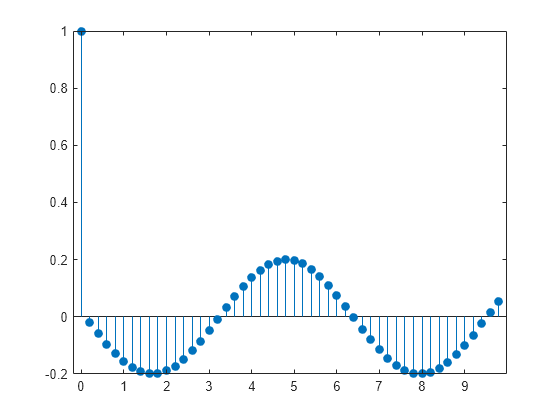ss2sos
Convert digital filter state-space parameters to second-order sections form
Syntax
Description
Examples
Input Arguments
Output Arguments
Algorithms
The ss2sos function uses this four-step algorithm to determine the
second-order section representation for an input state-space system.
Find the poles and zeros of the system given by
A,B,C, andD.Use the function
zp2sos, which first groups the zeros and poles into complex conjugate pairs using thecplxpairfunction.zp2sosthen forms the second-order sections by matching the pole and zero pairs according to these rules:Match the poles that are closest to the unit circle with the zeros that are closest to those poles.
Match the poles that are next closest to the unit circle with the zeros that are closest to those poles.
Continue this process until all of the poles and zeros are matched.
The
ss2sosfunction groups real poles into sections with the real poles that are closest to them in absolute value. The same rule holds for real zeros.Order the sections according to the proximity of the pole pairs to the unit circle. The
ss2sosfunction normally orders the sections with poles that are closest to the unit circle last in the cascade. You can specify forss2sosto order the sections in the reverse order by setting the order input to'down'.Scale the sections by the norm specified by the
scaleinput. For arbitrary H(ω), the scaling is defined bywhere p can be either ∞ or 2. For details, see the references. This scaling is an attempt to minimize overflow or peak round-off noise in fixed-point filter implementations.
References
[1] Jackson, Leland B. Digital Filters and Signal Processing. Boston: Kluwer Academic Publishers, 1996.
[2] Mitra, Sanjit Kumar. Digital Signal Processing: A Computer-Based Approach. New York: McGraw-Hill, 1998.
[3] Vaidyanathan, P. P. “Robust Digital Filter Structures.” Handbook for Digital Signal Processing (S. K. Mitra and J. F. Kaiser, eds.). New York: John Wiley & Sons, 1993.
Extended Capabilities
Version History
Introduced before R2006a



